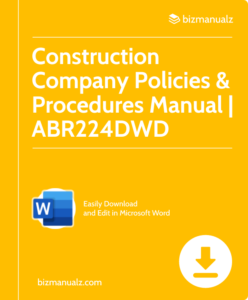How to Record Construction-in-Progress Charges

Recording construction-in-progress charges is a must for any construction project. These charges are the costs incurred during the various stages of building. Documenting and recording these correctly is vital for financial reporting and decision-making. How to Record Construction in Progress Charges.
Construction-in-Progress Charges
For recording Construction-in-Progress Charges, it’s important to have a system. This should include categorizing them by type such as labor, materials, equipment, and subcontractors. Plus, noting the date, description, and amount of each charge is necessary for clarity.
Also, making an account or ledger dedicated to recording these charges is a smart move. This makes it easier to differentiate them from other expenses and track costs throughout the project. Reconciling this account with invoices regularly keeps accuracy and stops any mistakes.
Pro Tip: To make things simpler, consider using software tailored to construction projects. These provide features like cost code management and automated calculations, to record and analyze construction-in-progress charges quickly.
When construction-in-progress charges are recorded well, project managers can monitor expenses and make budgeting, resource allocation, and future planning decisions. Recording these accurately contributes to financial stability and success in construction projects.
Importance of Recording Construction-In-Progress Charges
Recording construction-in-progress charges is essential for proper tracking of costs and progress of ongoing building projects project progress billing. Without accurate recording, monitoring expenses, analyzing project profitability, and meeting accounting regulations become difficult.
Recording these charges grants businesses a clear view of their finances at any given moment during the project. Tracking costs associated with the construction process allows companies to adjust budgets and prevent over-spending.
Plus, recording construction-in-progress charges makes financial reporting exact. It lets businesses divide costs between pre-construction, construction, and post-construction phases. Doing this precisely not only meets accounting standards but also gives shareholders and regulatory authorities clarity.
Moreover, recording construction-in-progress charges is critical for taxes. Companies can claim applicable tax deductions according to incurred expenses during the construction process. Recording and documenting these costs correctly helps maximize tax benefits and reduce audit risks.
Recording construction-in-progress charges is essential for project management and financial control. It gives a comprehensive view of project expenses, assists in decision-making, facilitates financial reporting, and optimizes tax deductions. By utilizing proper accounting practices for ongoing construction projects, businesses can enhance their overall financial performance.
Steps to Record Construction-In-Progress Charges
Capturing charges for construction-in-progress is essential for precise financial reporting. Follow a few simple steps to guarantee these charges are accurately recorded and shown in your books:
- Discover the Construction-In-Progress Costs:
- Find out the particular costs connected to the ongoing construction project.
- These can include materials, labor, equipment, permits, and all other expenses directly related to the project.
- Set Up an Individual Account:
- Establish a separate account in your company’s general ledger to monitor construction-in-progress charges.
- This will aid you to keep these charges distinct from other expenses and enable easier tracking and examination.
- Log Regular Updates:
- Record updates regularly to the construction-in-progress account.
- This should include any new expenses incurred as well as changes to previously noted charges.
- Make sure to provide precise descriptions of each transaction for clarity and reference purposes.
In addition, it is significant to keep exact records of all helping documentation, such as receipts, invoices, contracts, and work orders. These papers act as proof of the construction-in-progress charges and can be vital during audits or financial reviews.
To make sure compliance with accounting guidelines and regulations, it is wise to consult with a certified accountant or financial expert when recording construction-in-progress charges. Their knowledge will help reduce mistakes and optimize accuracy in your financial reports.
Stay up-to-date with your construction projects by recording their progress diligently. Neglecting to correctly record construction-in-progress charges can lead to wrong financial statements and may result in missed opportunities or potential penalties.
Don’t let possibilities pass you by! Take command of your construction projects by accurately logging their progress. Launch utilizing these steps today to remain ahead of the game and make informed business decisions based on dependable financial data.
Best Practices for Recording Construction-In-Progress Charges

Construction Policy and Procedure Manual
Recording construction-in-progress charges is important in the construction industry. Tracking these charges enables businesses to track project costs and make informed financial decisions. Here is a step-by-step guide to ensure best practices are followed:
- Identify and categorize costs: Determine all the costs related to ongoing construction projects. These may include materials, labor, equipment rentals, and subcontractor fees. Categorize each cost.
- Make a CIP account: Set up a CIP account in your accounting system to track all the charges connected with current construction projects.
- Record charges throughout: As the construction progresses, record charges for each cost category to the CIP account. Use detailed descriptions for clarity.
- Adjust and transfer charges: Once the construction project is finished, review the recorded charges in the CIP account and adjust any amounts due to changes or unexpected expenses. Then, transfer them to their respective permanent accounts.
Remember one pro tip: Reconcile your CIP account with supporting documents, like invoices and receipts, to ensure accuracy and transparency.
By following these steps, you can manage construction-in-progress charges and organize your financial system, which can improve decision-making in your organization.
Construction-in-Progress Charges
Recording charges for construction-in-progress is a must. It helps to track costs accurately, so that decisions can be informed. Standards in accounting and transparency in financial reporting can also be adhered to.
A consistent methodology is needed for recording such charges. Categorize expenses into different phases of the project, e.g. materials, labor and overhead costs. This makes it easier to allocate expenses and analyze financial impacts.
Technology can make recording easier. Specialized software offer cost tracking, budgeting modules and real-time updates. Automating these tasks can reduce errors and save time.
Internal controls are crucial for accurate recording. Audits and reviews should be conducted to verify completeness and accuracy. This way, discrepancies or misappropriation can be identified early, and financial risks minimized.
Pro Tip: Regularly review your cost allocation methodology for keeping up with industry standards and changes in project requirements or accounting regulations.

Q: How do I record construction-in-progress charges?
A: To record construction-in-progress charges, create an asset account named “Construction-in-Progress” and use it to track all costs related to ongoing construction projects.
Q: What expenses should be included in construction-in-progress charges?
A: Construction-in-progress charges should include costs such as materials, labor, equipment rentals, and subcontractor fees directly associated with the construction project.
Q: How should I classify construction-in-progress charges in my financial statements?
A: Typically, construction-in-progress charges are classified as a long-term asset on the balance sheet and recorded under the “Property, Plant, and Equipment” section.
Q: Can I capitalize interest charges as part of construction-in-progress?
A: Yes, you can capitalize interest charges accrued on loans specifically taken for financing the construction project. This should be done in accordance with your accounting principles.
Q: How do I allocate construction-in-progress charges to completed projects?
A: Once a construction project is completed, transfer the total accumulated construction-in-progress charges to a fixed asset account, such as “Building” or “Machinery,” and start depreciating or amortizing that asset.
Q: Are there any tax implications associated with recording construction-in-progress charges?
A: Yes, there might be tax implications, such as the capitalization of expenses and claiming depreciation deductions. Consult with a tax professional to ensure compliance with tax regulations in your jurisdiction.
















Leave a Reply